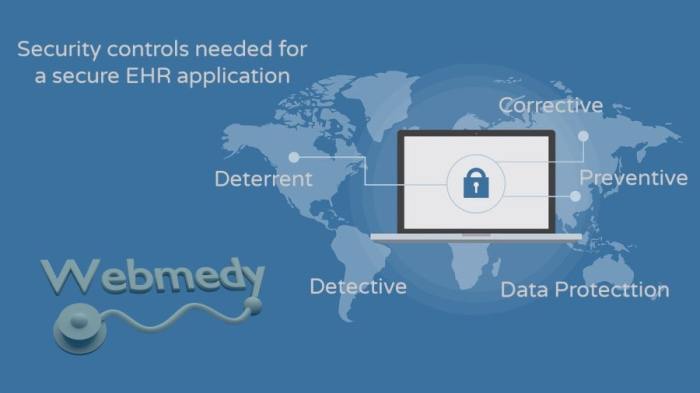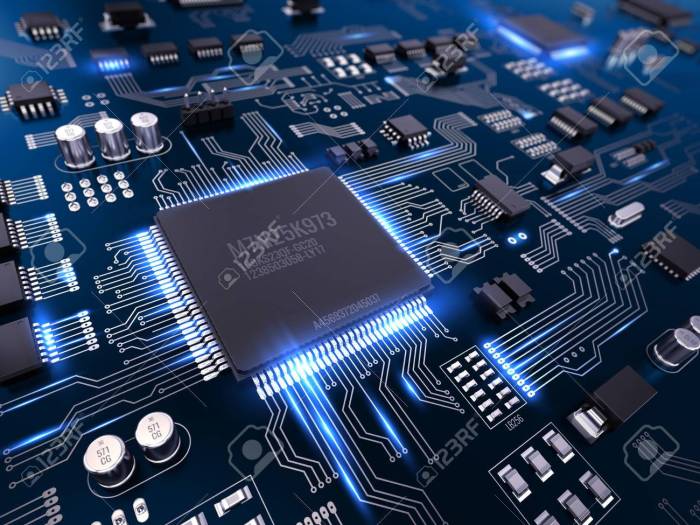
Electronic Health Records (EHR) sets the stage for this enthralling narrative, offering readers a glimpse into a story that is rich in detail and brimming with originality from the outset.
EHR systems are revolutionizing the healthcare landscape by digitizing patient information, enhancing care coordination, and streamlining clinical workflows. With a focus on improving patient outcomes, these systems allow healthcare providers to access comprehensive patient histories at their fingertips, making informed decisions that enhance the overall quality of care. As we delve into the multifaceted world of EHR, we will explore its core components, benefits, integration with other health services, and the challenges faced during its implementation.
Understanding Electronic Health Records (EHR)
The shift from traditional paper-based records to Electronic Health Records (EHR) marks a transformative evolution in healthcare management. EHR systems are designed to streamline the documentation, storage, and accessibility of patient information, enhancing the efficiency and effectiveness of healthcare delivery. As technology continues to advance, understanding the core components, benefits, and challenges of EHR systems becomes crucial for healthcare professionals and institutions.The core components of EHR systems include patient demographics, medical history, medication lists, immunization records, laboratory test results, and treatment plans.
These components are integrated to provide a comprehensive view of a patient’s healthcare journey. EHRs facilitate real-time access to patient data, enabling providers to make informed decisions swiftly. Moreover, they often incorporate features such as clinical decision support, which alerts healthcare providers about potential issues like drug interactions or allergies, significantly improving patient safety and care quality.
Benefits of Implementing EHR in Healthcare Settings
Implementing EHR systems in healthcare settings presents numerous advantages that enhance both patient care and operational efficiency. Some of the key benefits include:
- Improved Patient Care: EHR systems centralize patient information, ensuring that healthcare providers have easy access to up-to-date medical histories, which can lead to more accurate diagnoses and personalized treatment plans.
- Enhanced Coordination: EHRs facilitate better communication among various healthcare providers, allowing for seamless coordination of care, especially for patients requiring treatment from multiple specialists.
- Increased Efficiency: The digitization of records reduces administrative burdens, cutting down on time spent on paperwork and allowing healthcare professionals to focus more on patient care.
- Data Analytics: EHR systems enable healthcare organizations to analyze patient data, leading to better insights into population health trends and the ability to implement preventive measures effectively.
- Regulatory Compliance: EHRs assist healthcare providers in meeting regulatory requirements and standards, such as those set forth by the Health Insurance Portability and Accountability Act (HIPAA).
Challenges Faced During the Transition from Paper Records to EHR
Transitioning from paper records to EHR systems can be fraught with challenges that healthcare organizations must navigate to ensure successful implementation. Notable challenges include:
- Resistance to Change: Healthcare staff may resist adopting EHR systems due to a lack of familiarity with technology or fear of increased workload during the transition phase.
- Training Needs: Sufficient training is critical for ensuring that all staff members can effectively navigate and utilize EHR systems, which often requires time and resources.
- Data Migration: The process of converting existing paper records into digital format can be complex and time-consuming, with the risk of data loss or inaccuracies if not handled properly.
- Cost Implications: The initial costs associated with purchasing, implementing, and maintaining EHR systems can be significant, posing a barrier for smaller healthcare practices.
- Interoperability Issues: Ensuring that EHR systems can communicate effectively with other systems and platforms remains a challenge, impacting the seamless sharing of patient information.
The transition to Electronic Health Records is not merely a shift in technology; it is a comprehensive transformation in how we approach patient care and data management.
EHR and Patient Care

Electronic Health Records (EHR) play a crucial role in enhancing patient care by enabling better communication, coordination, and management of patient information among healthcare providers. These digital systems streamline processes, allowing for more accurate and timely patient outcomes. With their ability to consolidate patient histories, EHRs serve as a vital tool in modern healthcare.One of the primary ways that EHR improves patient outcomes is through enhanced care coordination.
With all patient data stored in one digital space, healthcare providers can easily access and share information, ensuring that care is consistent and comprehensive. For instance, when a patient visits a specialist, the EHR allows that specialist to view previous lab results, medications, and treatment plans from the primary care physician, reducing the risk of errors or duplicate tests.
Support for Clinical Decision-Making
EHR systems support clinical decision-making by providing evidence-based prompts and alerts that guide healthcare providers in delivering appropriate care. These systems can analyze patient data and suggest potential diagnoses or treatment options, which aids clinicians in making informed decisions swiftly.For example:
- EHRs can flag potential drug interactions when a provider prescribes new medications, alerting them to any risks associated with a patient’s current prescriptions.
- Clinical reminders and alerts can be generated based on patient data, prompting providers to recommend preventive care measures, such as vaccinations or screenings.
- Decision support algorithms can indicate when it may be time to adjust treatment strategies for patients with chronic conditions, based on historical and real-time data.
Role in Managing Chronic Diseases and Conditions
EHR systems have become indispensable in the management of chronic diseases, offering tools that facilitate ongoing monitoring and adjustment of treatment plans. Chronic conditions such as diabetes, hypertension, and heart disease require meticulous tracking of various health metrics, and EHRs provide the infrastructure to manage this data efficiently.EHRs enable healthcare providers to:
- Document and track patient progress over time, allowing for timely adjustments to treatment regimens.
- Facilitate communication between multiple providers involved in a patient’s care, ensuring all aspects of the chronic condition are addressed collaboratively.
- Utilize population health management features to identify trends and patient cohorts, enabling targeted interventions for those at risk of worsening conditions.
EHR Integration with Other Health Services

Electronic Health Records (EHR) have transformed the healthcare landscape by enabling seamless integration with various health services. This connectivity not only enhances patient care but also streamlines workflows across different sectors. A comprehensive approach to EHR integration can significantly improve efficiency, communication, and the overall quality of healthcare delivery.
EHR Integration with Pharmacy Management Systems
The integration of EHR systems with pharmacy management systems plays a crucial role in medication management and patient safety. This synchronization allows for real-time access to patient medication histories, prescriptions, and potential drug interactions. By integrating EHR with pharmacy systems, healthcare providers can streamline prescription workflows, reduce errors, and ensure that patients receive the correct medications in a timely manner.
The following benefits are observed from this integration:
-
Improved medication reconciliation
-Ensuring that patients’ medication lists are accurate and up-to-date reduces the risk of adverse drug events.
-
Enhanced communication
-Instant updates on medication changes allow pharmacists and providers to communicate effectively, contributing to better patient outcomes.
-
Automated refill requests
-EHR integrations can automate processes, enabling quicker refill requests and improving patient compliance.
EHR’s Use in Mental Health Treatment and Addiction Recovery
EHR systems have proven invaluable in mental health treatment and addiction recovery, providing tailored patient care and follow-up. Mental health providers utilize EHRs to document patient histories, treatment plans, and progress notes, which are essential in managing mental health disorders. In addiction recovery settings, EHRs facilitate the tracking of treatment milestones, medication-assisted therapies, and patient engagement through reminders and follow-up appointments.Key features of EHR in this field include:
-
Comprehensive documentation
-Capturing detailed patient interactions assists in creating personalized treatment plans.
-
Outcome tracking
-Clinicians can monitor recovery progress and adjust interventions based on real-time data.
-
Interdisciplinary collaboration
-EHRs promote communication among mental health professionals, primary care providers, and recovery coaches, leading to holistic care.
Comparison of EHR Functionalities in Various Healthcare Sectors
EHR functionalities can vary significantly across different healthcare sectors. Understanding these differences helps in optimizing the use of EHR systems for specific needs. Below is a comparison of EHR functionalities within the beauty and cosmetics, child health, fitness, and women’s health sectors:
| Healthcare Sector | Key Functionalities |
|---|---|
| Beauty and Cosmetics |
|
| Child Health |
|
| Fitness |
|
| Women’s Health |
|
Final Conclusion
In conclusion, the adoption of Electronic Health Records (EHR) not only transforms how patient data is managed but also significantly improves the quality of care delivered across various healthcare settings. By addressing the challenges and embracing the benefits, healthcare providers can ensure better patient outcomes, effective management of chronic diseases, and seamless integration with other health services. The journey of EHR is just beginning, and its potential to reshape the future of healthcare is immense.
FAQ Summary
What is an Electronic Health Record (EHR)?
An Electronic Health Record (EHR) is a digital version of a patient’s paper chart, containing a comprehensive collection of health information about the patient.
How does EHR improve patient care?
EHR enhances patient care by providing instant access to patient records, enabling better care coordination and more informed clinical decisions.
What are the security concerns with EHR systems?
Security concerns include data breaches, unauthorized access, and protecting patient privacy, which are essential to address through robust cybersecurity measures.
Can EHR systems be integrated with other medical technologies?
Yes, EHR systems can integrate with various medical technologies, including pharmacy management systems and telehealth platforms, to enhance patient care.
What challenges do healthcare providers face when switching to EHR?
Challenges include the high cost of implementation, training staff, and potential resistance to change from traditional paper-based systems.





